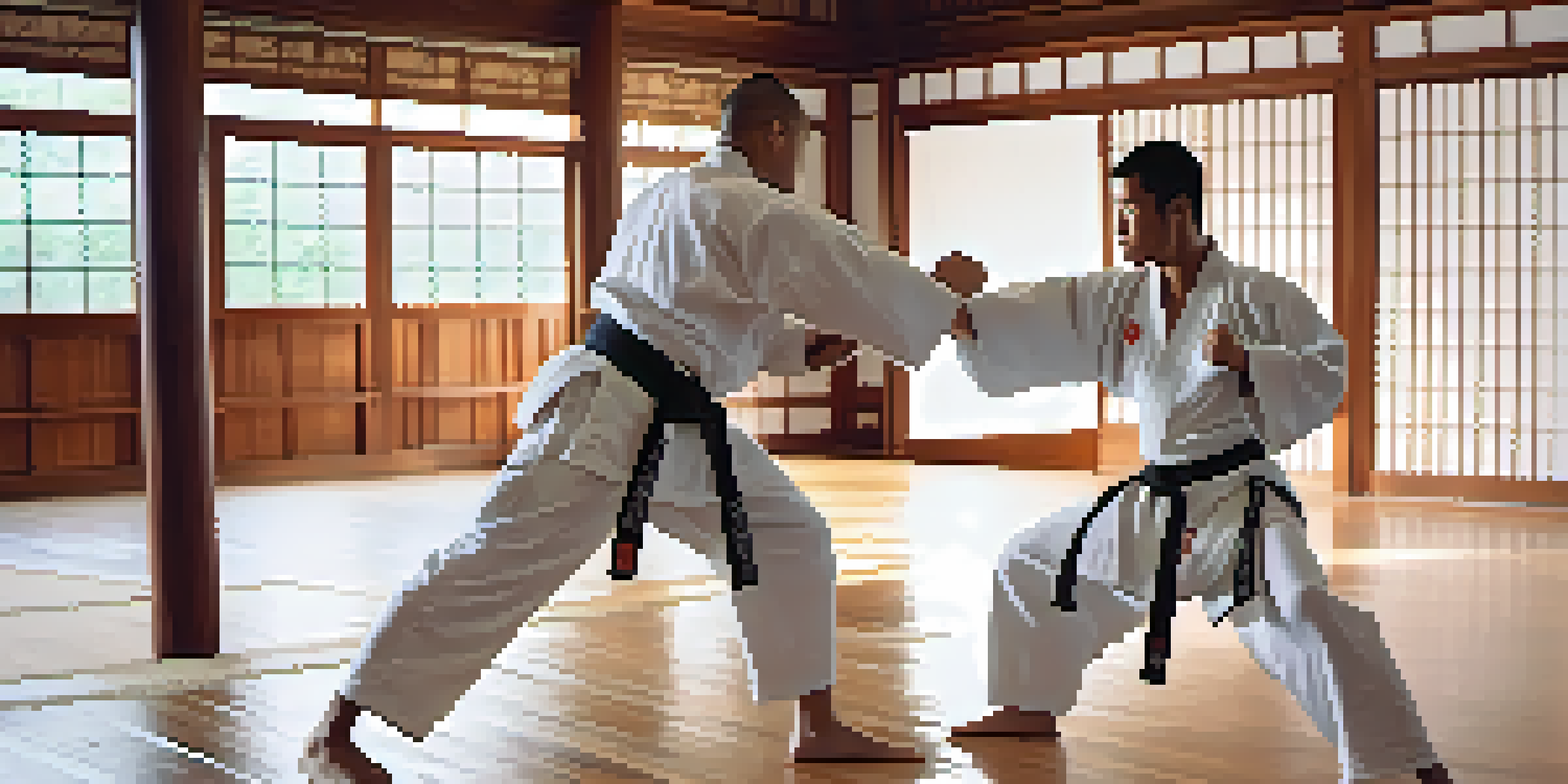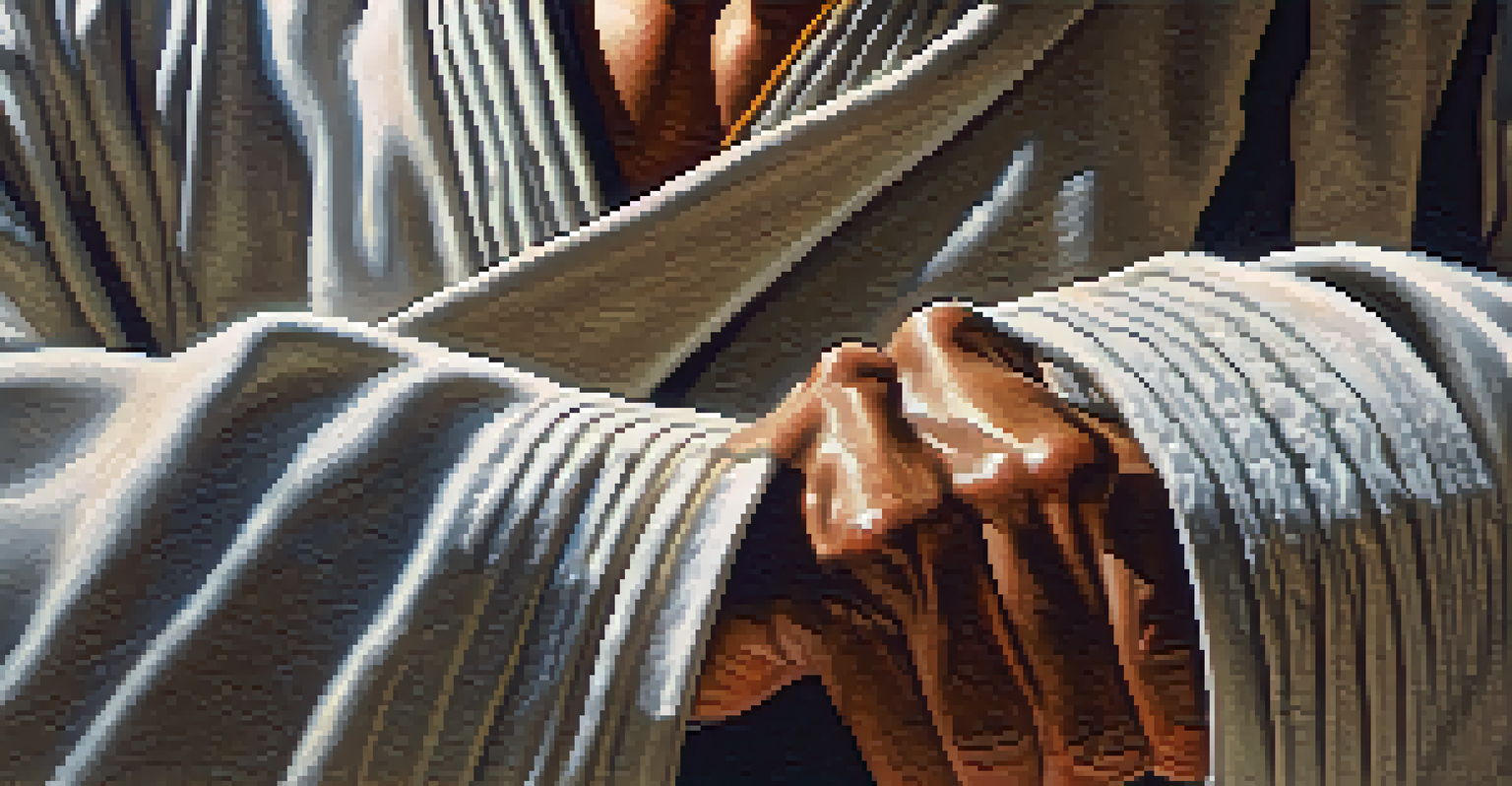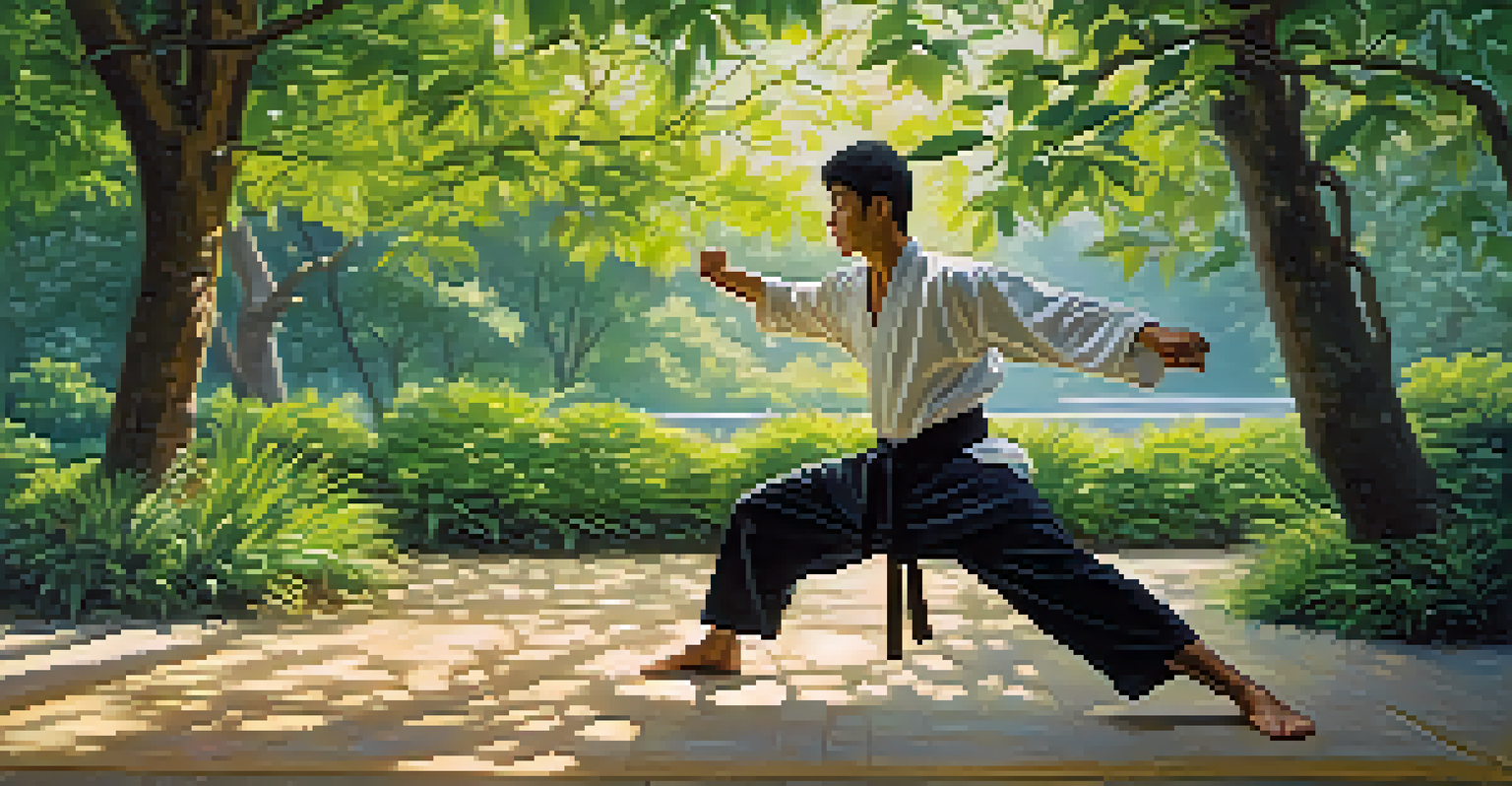The Role of Reflexes in Martial Arts Self-Defense Techniques

What Are Reflexes and Why Do They Matter?
Reflexes are automatic responses to stimuli, like flinching when something flies at your face. In martial arts, these quick reactions are crucial for self-defense. They help practitioners respond to attacks without overthinking, which can be the difference between safety and injury.
The reflexes that you develop during training can save your life in a high-pressure situation.
Imagine you’re walking down the street when someone suddenly lunges at you. If your reflexes are sharp, you might instinctively dodge or block the attack before your brain even registers what's happening. This is the power of reflexes—they operate in the background, allowing you to act swiftly and efficiently.
In martial arts training, developing these reflexes is key. Practitioners often engage in drills that mimic real-life scenarios, helping their bodies learn to react instinctively. The more you practice, the more your mind and body sync up, creating a seamless defense mechanism.
The Science Behind Reflexes
Reflexes are governed by the nervous system, which processes signals from your senses to initiate a response. When your body perceives a threat, sensory neurons send information to the spinal cord, which then sends signals back out to your muscles. This rapid communication means you can react in a fraction of a second.

For example, when training in martial arts, if a partner throws a punch, your reflexes help you respond almost instinctively—perhaps with a parry or a counterstrike. This is a clear demonstration of how the body can bypass the brain's slower processing time to react to immediate danger.
Reflexes: Key to Self-Defense
Reflexes enable martial artists to respond automatically to threats, enhancing their safety in unpredictable situations.
Understanding this scientific basis can help martial artists appreciate the importance of training their reflexes. By focusing on speed and reaction time during practice, they can prepare themselves for unpredictable encounters, enhancing their overall self-defense capabilities.
Types of Reflexes in Martial Arts
There are two main types of reflexes: simple and complex. Simple reflexes, like the knee-jerk reaction, involve one synapse and are quick. In contrast, complex reflexes require multiple synapses and involve more intricate responses, such as dodging an incoming kick.
In the moment of truth, you don’t rise to the occasion; you sink to the level of your training.
In martial arts, both types are valuable. Simple reflexes allow for immediate responses to threats, while complex reflexes enable practitioners to strategize and counterattack based on the opponent's movements. Training often incorporates both types, ensuring a well-rounded skill set.
For instance, during sparring, a martial artist might rely on simple reflexes to block a punch while simultaneously using complex reflexes to set up a counter. This blend of reflex types enhances adaptability and effectiveness in self-defense situations.
Training Reflexes Through Repetition
Repetition is a cornerstone of developing strong reflexes. By practicing techniques repeatedly, martial artists train their bodies to respond automatically to specific movements or attacks. This muscle memory is crucial for an effective self-defense response.
Think about it like learning to ride a bike: at first, it takes concentration and effort, but eventually, it becomes second nature. Similarly, through consistent training, martial artists can program their bodies to react without hesitation.
Training Builds Automatic Responses
Repetition and sparring develop muscle memory and adaptability, allowing martial artists to react instinctively during real encounters.
Drills, sparring sessions, and even scenario-based training help engrain these reflexes. Over time, with enough practice, what once felt like a conscious effort transforms into an instinctual reaction, making self-defense more fluid and intuitive.
The Role of Sparring in Reflex Development
Sparring plays a significant role in developing reflexes because it introduces unpredictability. Unlike static drills, sparring simulates a real encounter where each participant can react and respond to the other's movements. This dynamic environment sharpens reflexes in a practical context.
During sparring, martial artists must think on their feet, adjusting their techniques based on their partner's actions. This encourages quick decision-making and enhances reflexive responses. The more varied the sparring partners and styles, the better the martial artist becomes at adapting.
For example, a practitioner may have a specific reaction to a punch but must adjust that response when facing a different style. This adaptability is crucial in self-defense situations, where attackers can come from unexpected angles and with various techniques.
Mental Conditioning and Reflexes
Mental conditioning is just as important as physical training when it comes to reflexes. The mind plays a vital role in how quickly and effectively we respond to threats. Visualization techniques and mental rehearsals can enhance a martial artist's ability to react instinctively.
By imagining different scenarios and their responses, practitioners can prepare themselves for real-life encounters. This mental practice can help reduce panic and hesitation, enabling quicker reflexive actions when it matters most.
Mental Conditioning Enhances Reflexes
Visualization and mindfulness training improve awareness and reaction times, ensuring quicker responses to potential dangers.
Additionally, mindfulness and focus during training can sharpen awareness and improve reaction times. When martial artists are fully present, they can better gauge their surroundings and anticipate possible threats, allowing their reflexes to kick in at the right moment.
Adapting Reflex Training for Different Styles
Different martial arts styles may emphasize varying aspects of reflex training. For instance, striking arts like boxing focus heavily on quick hand-eye coordination, while grappling arts like judo might concentrate more on body positioning and balance. Understanding these nuances can help practitioners tailor their reflex training.
For example, a karate practitioner might focus on blocking and countering punches, while a Brazilian jiu-jitsu student will work on reflexes related to escaping holds or submissions. By adapting training to their specific discipline, martial artists can enhance their effectiveness in self-defense situations.

Exploring various styles can also broaden a martial artist's skill set. By integrating techniques from different disciplines, they can develop a more robust reflexive response to diverse situations, ultimately improving their overall self-defense capabilities.